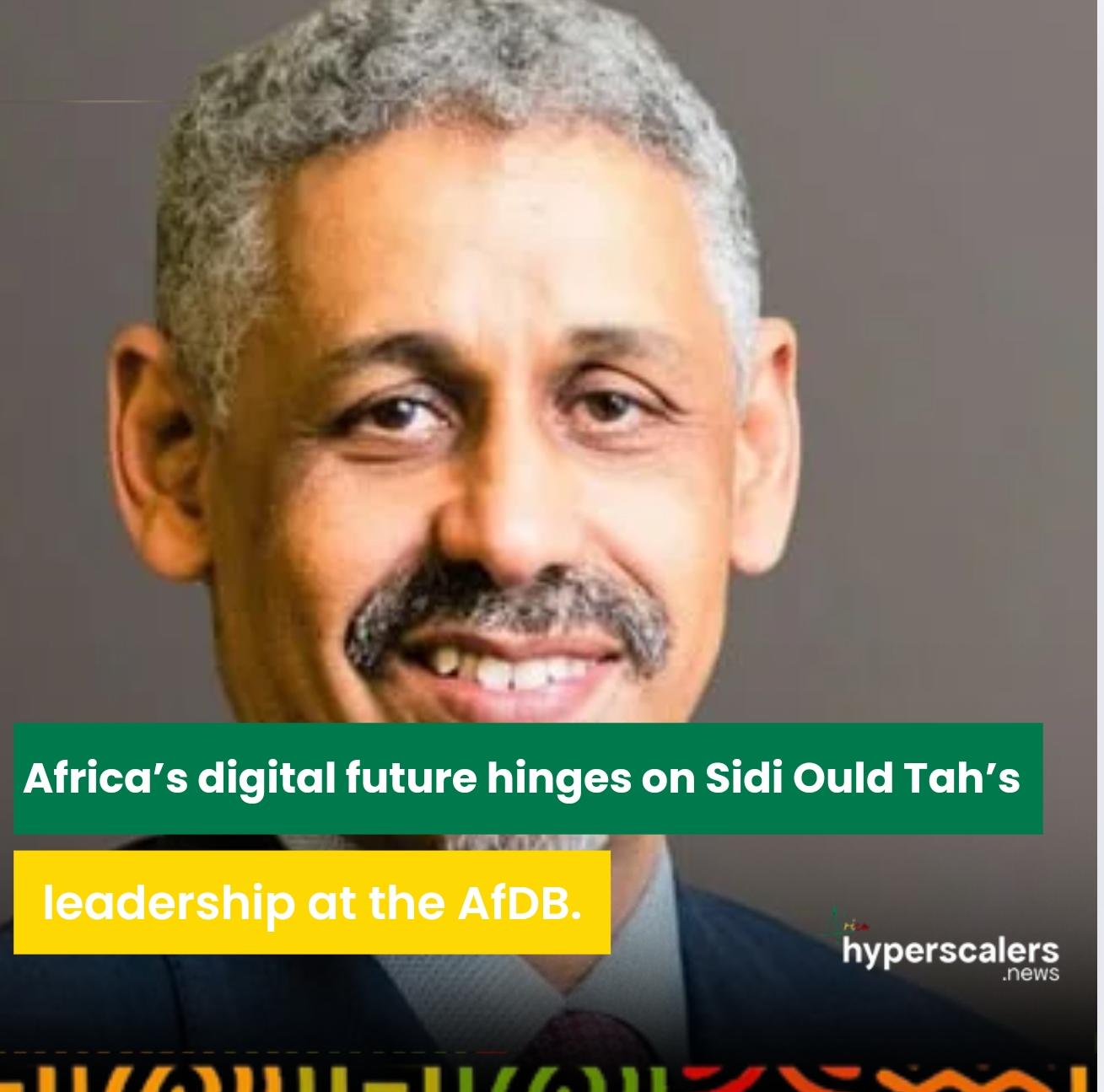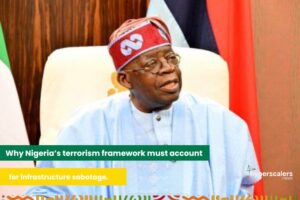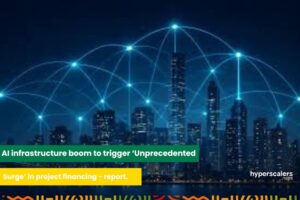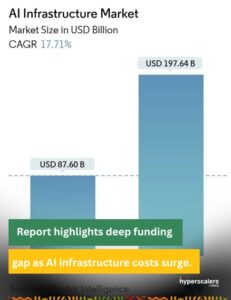The African Development Bank’s new president must move beyond incremental development to drive the continent’s digital transformation.
On May 29, the race to lead the African Development Bank (AfDB) unfolded like a geopolitical pageant – part papal conclave, part Eurovision. After days of closed-door deliberations, Sidi Ould Tah of Mauritania emerged as Africa’s new chief financier. Since his election, many profiles have described him as a discreet listener, a polyglot, and a man of deep faith. Indeed, these are admirable qualities for a leader in turbulent times. But the bigger question looms: will he merely manage Africa’s development, or reimagine it for a digital age?
Ould Tah steps into this role at a critical moment in Africa’s economic history. The US Trumpian presidency, marked by transactional foreign policy and an inward-looking stance, accelerated a wave of global nationalism that persists today. Donor aid flows to Africa have shrunk as traditional partners turn their attention to domestic priorities, climate adaptation, and geopolitical tensions elsewhere. Across the continent, governments are grappling with falling development and grant funding, projected to decline considerably in coming years – while private capital remains wary of Africa’s perceived risks, and domestic capital markets are yet to mobilize meaningfully for infrastructure. This leaves a stark paradox: a development bank with billions to deploy, but a continent needing trillions to build its future.
The only viable path forward is leverage financial leverage through blended finance and catalytic capital, political leverage through policy reforms and regulatory coherence, and technological leverage through strategic digital investments. Among these, digital offers the greatest multiplier effect. It is the backbone of every modern economy, the invisible rail that carries commerce, services, security, and governance into the future.
AfDB’s track record: progress and gaps
Under outgoing President Akinwumi Adesina, the AfDB achieved significant milestones. Over the past decade, the Bank financed more than $102 billion in development projects – from roads and railways to power grids, humanitarian programs, and agribusiness transformation. Adesina described it as the highest ten-year financing in AfDB history, representing nearly half of all lending since its establishment in 1964.
The Bank’s investments have been broad-based:
- Food Security: It deployed $1.5 billion to avert a looming food crisis, producing 37 million metric tons of food through its Emergency Food Production Facility. Its TAAT program reached 25 million farmers with climate-smart seeds.
- Energy: The $20 billion Desert to Power initiative aims to generate 10 GW of solar across the Sahel, while Morocco’s Noor Ouarzazate solar plant and Kenya’s Menengai geothermal project exemplify its renewable energy push.
- Transport: The Bank has invested $13.5 billion in transport infrastructure, backing Tanzania’s standard gauge railway, Uganda’s Kampala–Jinja Expressway, and other continental corridors.
- Women and SMEs: Through its Affirmative Finance Action for Women in Africa (AFAWA), the Bank unlocked $2.5 billion for women-led businesses, the most undercapitalized segment of Africa’s enterprise landscape.
Despite notable achievements, Africa’s digital infrastructure investment remains modest, especially when compared to other emerging regions. Between 2016 and 2024, the African Development Bank (AfDB) invested nearly $3 billion in ICT-related spending, but less than $500 million of this went to core digital infrastructure like fiber networks and data centers. This represents just 0.49% of the Industrialize Africa priority and only 2.8% of AfDB’s overall portfolio. Most of the Bank’s digital support has focused on policy development, skills training, and enterprise support, with only limited direct investment in physical infrastructure.
Africa’s digital gaps are stark. Almost half of the 400 million people that lack mobile broadband coverage worldwide live in Sub-Saharan Africa. Fewer than 45% of Africans have mobile internet access, and fixed broadband penetration is below 5%. Estimates indicate that over 80% of Africa’s data is hosted offshore, leading to latency, legal, and economic issues. Around 500 million Africans lack official identification, excluding them from essential services such as banking, healthcare, education, and voting. Africa’s youth population, set to be the world’s largest by 2030, faces exclusion from the digital economy without urgent investment in skills and infrastructure.
The World Bank estimates Africa needs $100 billion to achieve universal internet access, with 80% for core infrastructure like fiber, towers, and data centers. While telcos such as MTN, Orange, Vodacom, and Airtel have expanded broadband networks, Africa’s multinational ICT investment grew from $3.7 billion in 2003 to $23.5 billion in 2020, mostly in mobile broadband. Data center investment is rising, but at least 100 more are needed by 2025 to meet demand.
In contrast, India has invested tens of billions since 2010, laying over 4.2 million km of fiber and growing internet connections from 250 million in 2014 to over 970 million in 2024, a 288% increase. Its data center capacity has surpassed 1,000 MW, projected to exceed 4,500 MW by 2030, driven by strong public investment and policy support.
Brazil invests around 2% of GDP in infrastructure yearly, with a peak of $40.2 billion in 2023, though this spans all sectors. It allocated $4 billion recently to AI and digital innovation. Private sector investment drives data centers and broadband, but fixed broadband remains below OECD averages and rural connectivity lags.
Southeast Asia requires $40–60 billion for digital infrastructure from 2023–2027, with Indonesia alone needing $19 billion for fiber. Indonesia’s digital economy is expected to surpass $130 billion by 2025, underpinned by national roadmaps prioritizing 5G and data centers. Internet penetration rose from 10.9% in 2010 to 53.7% in 2020, but fixed broadband remains low.
Overall, Africa’s digital infrastructure investment remains far below that of emerging peers. India and Southeast Asia have prioritized digital buildout, driving rapid growth in connectivity and data centers, while Latin America invests heavily despite rural gaps. Without urgent, large-scale investment, Africa risks widening its digital divide, undermining economic growth and global competitiveness.
The digital economy’s geopolitical stakes
Beyond inclusion, there are deeper geopolitical stakes. Today, most of the world’s data flows through the North Atlantic, between Europe and the US. Africa’s major economies – Nigeria, Kenya, South Africa – remain on the periphery of this infrastructure map. There is no direct subsea cable linking West or Southern Africa to the Americas without detouring through Europe, adding latency and vulnerability. Landlocked nations face an even steeper climb, relying on fragile overland links to coastal landing stations. The continent has less than 1% of global data center capacity, crippled by limited use cases, underinvestment, high energy costs, and regulatory barriers.
Without decisive investment, Africa risks digital marginalization in an AI-driven global economy.
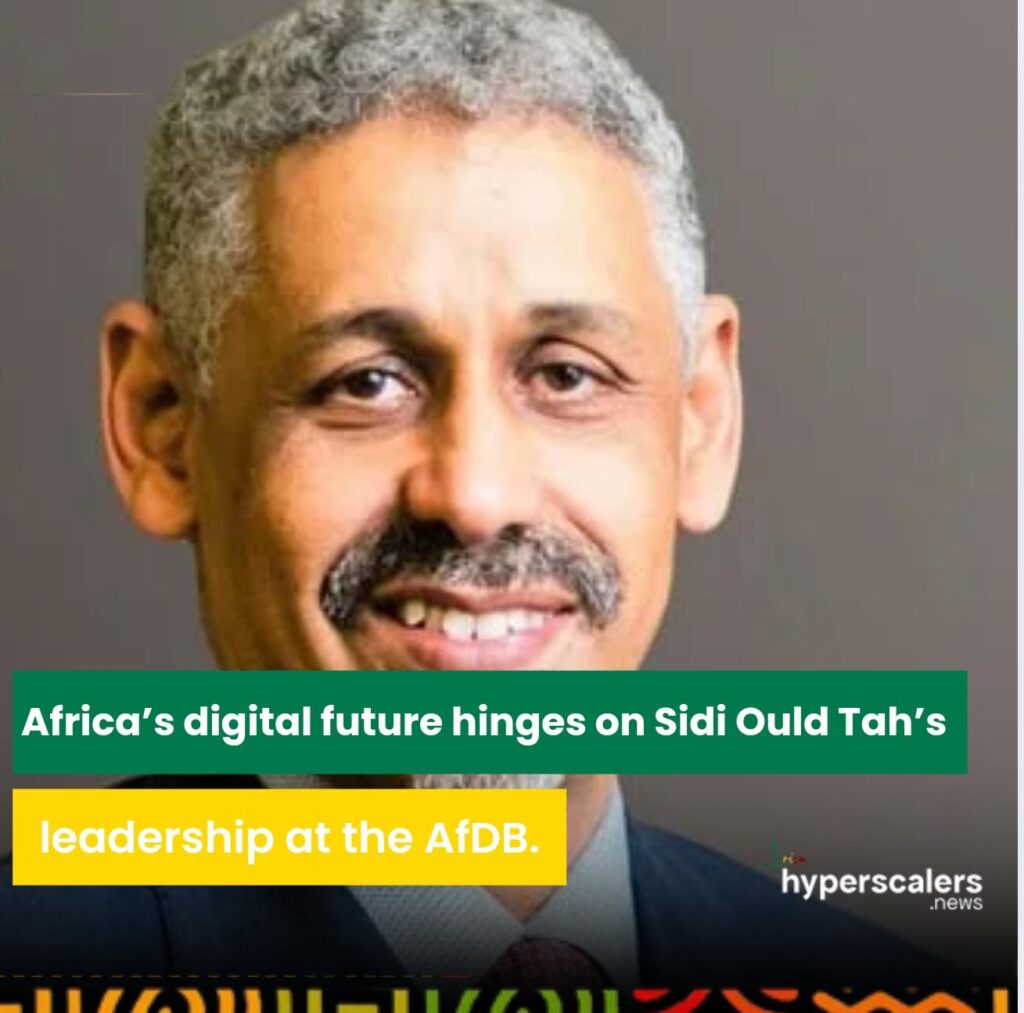
The case for a digital Marshall plan
To transform Africa meaningfully, the Ould Tah-led AfDB must champion a Digital Marshall Plan, grounded in five pillars:
- Pan-African fiber and universal access: Nearly 800 million Africans remain offline. The AfDB must finance cross-border backbone fiber networks that integrate entire regions, not just nations, enabling affordable broadband access from the Sahel to the Great Lakes. Fiber is not just a connectivity asset; it is the rail line for cloud computing, AI workloads, e-commerce, and regional integration under the African Continental Free Trade Area.
- Local cloud infrastructure and data sovereignty: Africa is the world’s most externally reliant continent for data storage, with fewer than 20% of its data hosted locally. The vast majority are routed through Europe, the Americas, and the Middle East. In contrast, North America and Europe store 80–90% of their data within their borders, while China retains over 90% domestically, enforced by stringent data sovereignty laws. Even Australia keeps approximately 85% of its data onshore. This heavy offshore dependence exposes African businesses and governments to higher costs, slower network performance, and complex legal risks. It also creates dependency, lost economic value, compliance challenges, and security vulnerabilities. Yet data centers act as economic catalysts – generating jobs, attracting foreign investment, and enabling domestic digital ecosystems. Without a deliberate push to build local data centers and cloud infrastructure, Africa risks remaining on the margins of the global digital economy, unable to fully capture the benefits of sovereignty, security, and digital innovation. The African Development Bank (AfDB) should provide catalytic financing and credit guarantees to attract hyperscale and regional cloud providers to establish local data centers, while supporting smart data protection regulations to enable secure cross-border flows.
- Digital ID and e-Governance: Driven by growing nationalism, digital identity is fragmenting along geopolitical fault lines. Europe is building compliant oligopolies, China enforces state-led omniscience, and the United States has a fragmented patchwork of state and private IDs with poor interoperability. This lack of global coherence creates an opportunity for Africa to lead in interoperable digital ID systems and e-governance platforms that reduce corruption, enhance tax collection, and unlock inclusion. From tax revenues to health insurance enrolment, digital identity is the first step towards modernising African states. The AfDB should play a leading role in driving this transformation.
- Upskilling 100 million Youth
By 2030, Africa will have the world’s largest youth workforce. Without digital skills, this demographic dividend becomes a liability. The AfDB must fund large-scale programs in AI, coding, cybersecurity, cloud computing, and digital entrepreneurship, delivered through partnerships with global tech firms, African universities, and vocational training institutes. - An African tech investment fund
Africa attracts less than 1% of global venture capital. The AfDB can change this by establishing a co-investment fund to de-risk early-stage deals and crowd in capital from venture firms, sovereign wealth funds, and the diaspora. Africa must be seen not merely as a consumer market for imported technologies, but as a factory of digital builders creating solutions for the continent and the world.
A moment of leverage
But digital transformation is not just about funding. It requires political will, institutional alignment, and continental ambition. Fiber networks demand rights of way and cross-border coordination. Data centers require stable energy policy and competitive electricity pricing. Digital ID systems hinge on legal frameworks and regional interoperability. Cloud infrastructure requires clarity on data protection, localisation, and sovereignty regulations. These decisions are made in presidential offices and cabinet rooms. Sidi Ould Tah cannot sit in Abidjan and expect magic to happen. He must engage relentlessly with Africa’s political leaders, ministries of finance, ICT regulators, and heads of state, building trust, aligning incentives, and breaking deadlocks.
Africa cannot afford incrementalism. In ten years, when Ould Tah may conclude a possible two-term tenure, the window to define Africa’s place in the global digital order could be closed. If the Bank does not lead, others will. China will continue to offer tied loans and proprietary closed systems. The West, distracted by its own political cycles, may simply look away.
Africa’s digital moonshot
Digital is Africa’s opportunity to close the infrastructure gap.
The AfDB has to be mission control.
The politics of the AfDB race may have been regional, but the priorities must be continental. The world’s attention may waver, but Africa cannot afford to. Ould Tah must move fast, build powerful coalitions, and anchor the Bank’s future in Africa’s digital destiny. Because in the end, leadership is not about rhetoric; it is about action. And Africa’s digital future cannot wait.
Africa does not have a capacity problem; it has a scale challenge. Africans have consistently proven themselves industrious and innovative in every sector. But too often, we do the same things in small ways. To transform our economies and societies meaningfully, we must scale our ambitions and drive lasting change through digital infrastructure. Only then can Africa truly realise its potential in the global digital era.


